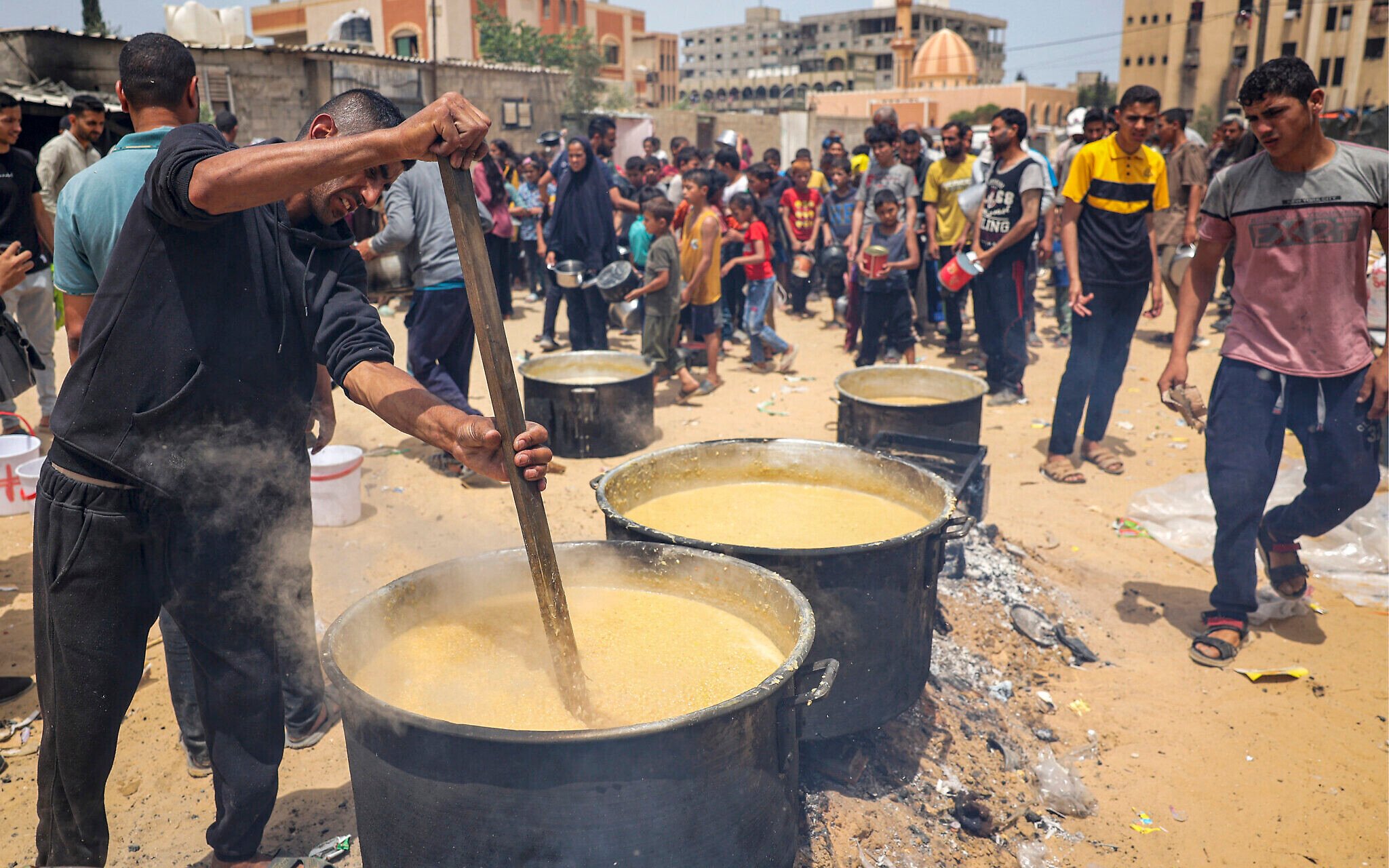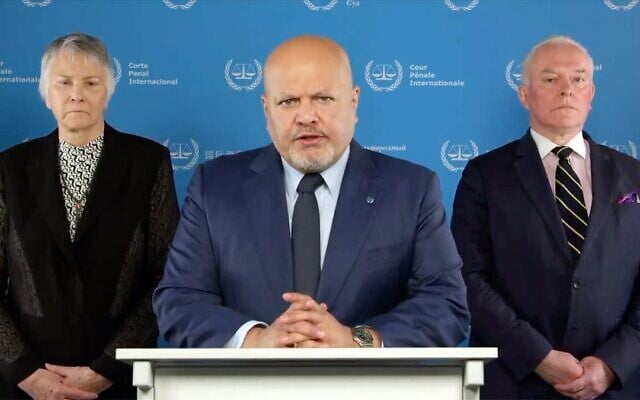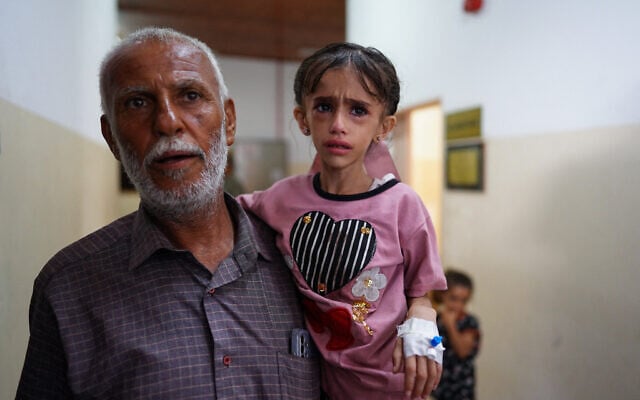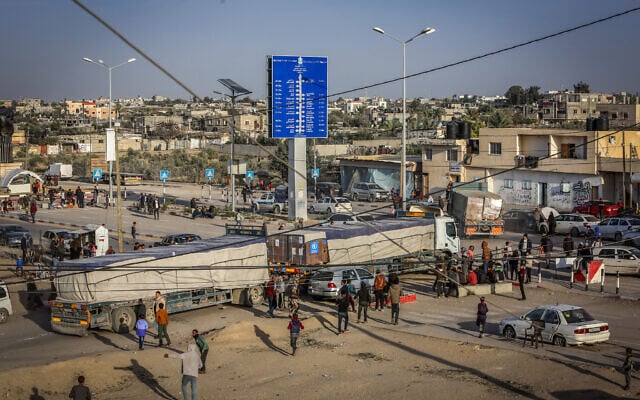



A review conducted by the UK Lawyers for Israel (UKLFI) organization into allegations by international famine review bodies that famine and severe malnutrition were widespread and prevalent in Gaza during the war between Israel and Hamas has found that famine did not break out in the territory according to the figures of the very organizations making the claims.
The report noted severe problems with the reports these organizations issued, due to what it said was their use of “incomplete or inaccurate data,” the inconsistent application of methodological standards, failure to take into account new data, and “potential bias” in how it interpreted and presented the information it had.
These groups data were used as evidence by the International Court of Justice and the International Criminal Court prosecutor in legal proceedings they initiated against Israel, and have created severe legal problems for the State of Israel.
From almost the very beginning of the war, the Integrated Food Security Phase Classification (IPC), connected to the Food and Agriculture Organization of the UN, and the Famine Early Warning Systems Network (FEWS NET) established by USAID, began issuing periodic reports on the food security situation in Gaza, asserting in early and late 2024 that famine was either imminent or had already taken hold in parts of the territory.
Israeli academics and public health officials began questioning the accuracy and reliability of these reports from May 2024, highlighting how the estimates made by these organizations appeared to ignore key information about aid supply and use data from questionable sources.
UKLFI’s review of the issue, published last week and which highlighted these criticisms, found that there was no famine in Gaza during the war, as defined by IPC standards, and that even levels of acute malnutrition were only marginally higher than pre-war figures.
These errors resulted from overlooking significant sources of food supply, IPC misclassifying its own data, and using an incorrect baseline figure for pre-war acute malnutrition which made it appear that there had been a sharp increase in the phenomenon during the war, UKLFI’s study stated.
Other problems leading to false IPC and FEWS NET determinations about famine and malnutrition in Gaza included comparing different metrics for those phenomena and overestimating the population of northern Gaza, where predictions of famine were especially grave due to an erroneous understanding of the amount of food aid available per person there.
The allegations of famine formed a central part of the legal processes against Israel’s conduct of the war against Hamas in both the International Court of Justice and the International Criminal Court in The Hague. The ICC has charged Prime Minister Benjamin Netanyahu and former defense minister Yoav Gallant with war crimes and crimes against humanity for allegedly using starvation as a method of war against the Palestinians, and issued warrants for their arrest.
UKLFI said in its report that future assessments of food security “should strive for greater accuracy and objectivity to ensure that international responses are proportionate and based on factual realities.”
In the wake of Hamas’s October 7 invasion and massacres, Israel embarked on a massive military campaign against Gaza and initially limited the amount of aid that went into the territory. But two weeks after the beginning of the war, aid began entering the strip.
Two of the most problematic reports regarding alleged famine were issued in March 2024 and November 2024 by the IPC’s Famine Review Committee (FRC).
The FRC’s March report asserted that famine was “was projected and imminent,” in particular in northern Gaza, and that 677,000 people in the Gaza Strip were already in the Phase 5 Catastrophe level of its food insecurity scale.
If this were correct, it would have meant that at least 135 people were dying of starvation every day in March 2024.
An IPC Special Brief projected that 1.1 million people would be in the Phase 5 Catastrophe level in the period from March 16 to July 15, 2024, which would have meant at least 221 people dying of starvation every day in that period.
The FRC’s November report stated that there was “an imminent and substantial likelihood of famine occurring,” while in December 2024, FEWS NET published an “Alert” asserting that “A Famine (IPC Phase 5) scenario continues to unfold in North Gaza Governorate.”
UKLFI identified numerous, substantive problems with these reports, however.
In June 2024, the FRC itself published an updated report stating that “the available evidence does not indicate that Famine is currently occurring,” despite its dire predictions from March.
The March report also did not provide any statistics on the mortality rate from the malnutrition and starvation it asserted was happening and predicted would strengthen from March to July.
That report noted that the death toll related to malnutrition was 25 in total, whereas the claimed Phase 5 catastrophe level in northern Gaza should have meant that some 60 people were dying from malnutrition every day, according to the population in the region at the time, UKLFI said.
The June report did provide a mortality rate from all causes, meaning as a result of military action and malnutrition together. The stated level would, however, only have qualified as Phase 3 level of food insecurity at the most, if it was based on non-trauma deaths, which it was not.
UKLFI noted in its study that FRC, and the World Food Program organization, were in possession of the non-trauma mortality figures but chose not to share them.
Another key problem with the March report – as pointed out in an Israeli study by public health officials published by Israel’s Foreign Affairs Ministry in May and noted in the UKLFI’s study – was that it failed to take into account food supplied to northern Gaza by the private sector, alongside the humanitarian aid brought into the territory.
The March report was cited directly by the International Court of Justice in the genocide suit brought by South Africa against Israel, and also referenced by the International Criminal Court’s prosecutor Karim Khan when he announced he was seeking arrest warrants against Netanyahu and Gallant, warrants which were ultimately issued by the court.
Indeed Khan specifically cited the FRC claim that 1.1 million were facing “catastrophic hunger,” which he said was the highest number “ever recorded, anywhere, anytime,” when filing his application for arrest warrants against Netanyahu and Gallant.
In November, the FRC issued an “Alert” saying there was a “substantial likelihood of famine, particularly in northern Gaza, and stating, “It can therefore be assumed that starvation, malnutrition, and excess mortality due to malnutrition and disease, are rapidly increasing in these areas.” Famine thresholds “may have already been crossed,” it added.
But this report, too, did not include mortality data to back up its assertions. It stated that a malnutrition parameter known as MUAC indicated Phase 3 malnutrition throughout Gaza, but did not provide precise details.
In a “Special Brief” also issued in November, FRC said that acute malnutrition was “ten times higher” than before the war.
But the FRC reports, and a FEWS NET report, mistakenly asserted that the MUAC rate in Gaza before October 7, 2023 was 1%, when in reality it was 4%, UKLFI pointed out.
Data sources cited by the FRC November report showed that MUAC in northern Gaza in August and September was 2%, indicative of IPC Phase 1 and for all of Gaza was 5%, indicative of IPC Phase 2, meaning only slightly above the pre-war rate, UKLFI noted.
“There has been no Famine, as defined by the IPC, in the Gaza Strip since October 2023. Acute malnutrition levels are only marginally higher than pre-war figures,” the UKLFI study asserted in its conclusions.
The UKLFI report said that the IPC and FEWS NET reports had demonstrated “a pattern of overestimation and misrepresentation” due to “Reliance on incomplete or inaccurate data,” “inconsistent application of methodological standards,” “Failure to adequately revise projections in light of new data,” and “Potential bias in interpretation and presentation of findings.”
Added the authors: “These errors have led to an exaggerated portrayal of the food security situation in Gaza, which has been used to influence international opinion and policy.”
IPC did not immediately respond to a request for comment.




